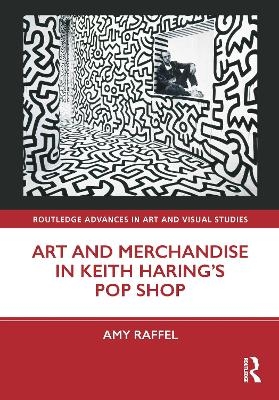
Art and Merchandise in Keith Haring’s Pop Shop
Seiten
2020
Routledge (Verlag)
978-0-367-85873-5 (ISBN)
Routledge (Verlag)
978-0-367-85873-5 (ISBN)
This book uses the Pop Shop, a previously overlooked enterprise, and artist merchandising to reconsider the significance and legacy of Haring’s career as a whole, especially his career long pursuit of populism.
As one of the first academic monographs on Keith Haring, this book uses the Pop Shop, a previously overlooked enterprise, and artist merchandising as tools to reconsider the significance and legacy of Haring’s career as a whole.
Haring developed an alternative approach to both the marketing and the social efficacy of art: he controlled the sales and distribution of his merchandise, while also promulgating his belief in accessibility and community activism. He proved that mass-produced objects can be used strategically to form a community and create social change. Furthermore, looking beyond the 1980s, into the 1990s and 2000s, Haring and his shop prefigured artists’ emerging, self-aware involvement with the mass media, and the art world’s growing dependence on marketing and commercialism.
The book will be of interest to scholars or students studying art history, consumer culture, cultural studies, media studies, or market studies, as well as anyone with a curiosity about Haring and his work, the 1980s art scene in New York, the East Village, street art, art activism, and art merchandising.
As one of the first academic monographs on Keith Haring, this book uses the Pop Shop, a previously overlooked enterprise, and artist merchandising as tools to reconsider the significance and legacy of Haring’s career as a whole.
Haring developed an alternative approach to both the marketing and the social efficacy of art: he controlled the sales and distribution of his merchandise, while also promulgating his belief in accessibility and community activism. He proved that mass-produced objects can be used strategically to form a community and create social change. Furthermore, looking beyond the 1980s, into the 1990s and 2000s, Haring and his shop prefigured artists’ emerging, self-aware involvement with the mass media, and the art world’s growing dependence on marketing and commercialism.
The book will be of interest to scholars or students studying art history, consumer culture, cultural studies, media studies, or market studies, as well as anyone with a curiosity about Haring and his work, the 1980s art scene in New York, the East Village, street art, art activism, and art merchandising.
Amy Raffel, Ph.D., is an independent scholar who currently works in museum interpretation and education.
1. Hitting the Streets: Early Lessons in Populism and Advertising 2. The Downtown Scene and Artist-Run Shops of the 1980s 3. The Pop Shop 4. Art Merchandise and Media as Activist Strategies 5. The Post-Pop Shop: Its Life and Legacy after Haring’s Death 6. Pop Shop Chain Reaction: Artist Merchandising in the 2000s
| Erscheinungsdatum | 15.01.2021 |
|---|---|
| Reihe/Serie | Routledge Advances in Art and Visual Studies |
| Zusatzinfo | 60 Halftones, black and white; 60 Illustrations, black and white |
| Verlagsort | London |
| Sprache | englisch |
| Maße | 171 x 246 mm |
| Gewicht | 720 g |
| Themenwelt | Kunst / Musik / Theater ► Kunstgeschichte / Kunststile |
| Geisteswissenschaften ► Geschichte | |
| Geisteswissenschaften ► Psychologie ► Allgemeine Psychologie | |
| Sozialwissenschaften ► Soziologie | |
| Wirtschaft ► Volkswirtschaftslehre | |
| ISBN-10 | 0-367-85873-8 / 0367858738 |
| ISBN-13 | 978-0-367-85873-5 / 9780367858735 |
| Zustand | Neuware |
| Informationen gemäß Produktsicherheitsverordnung (GPSR) | |
| Haben Sie eine Frage zum Produkt? |
Mehr entdecken
aus dem Bereich
aus dem Bereich
Techniken der Verhaltenstherapie
Buch (2024)
Julius Beltz GmbH & Co. KG (Verlag)
35,00 €


